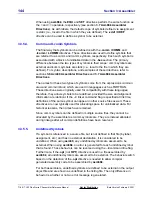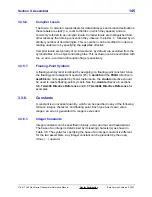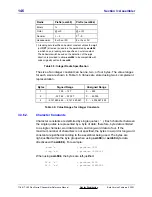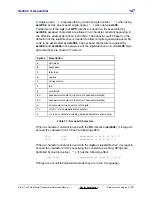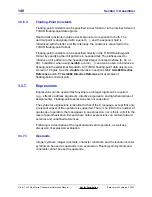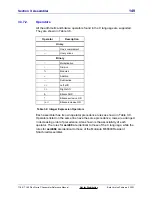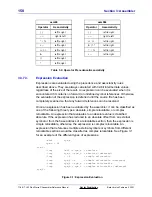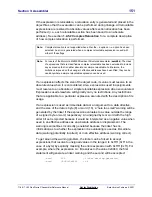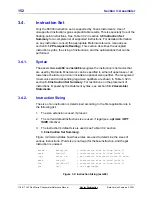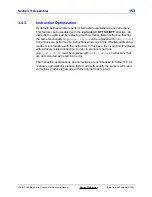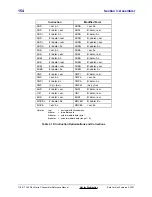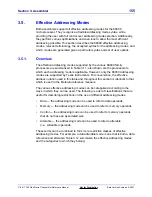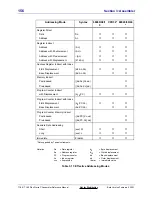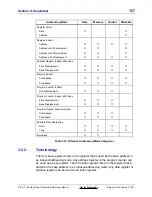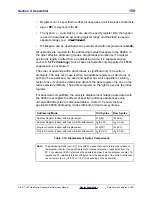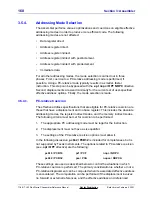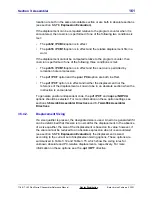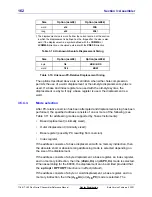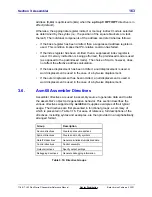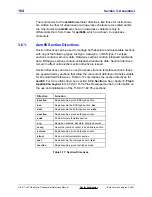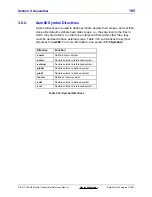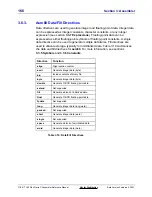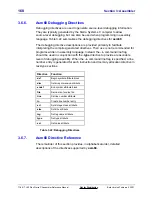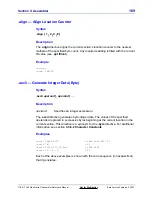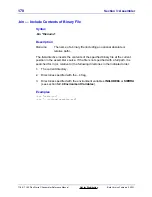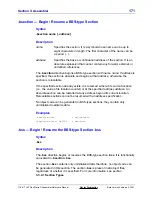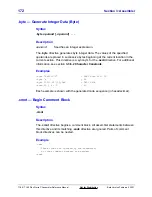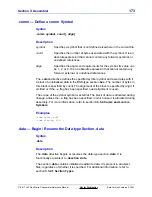
158
Section 3: Assembler
TI
-
89 / TI
-
92 Plus Sierra C Assembler Reference Manual
Not for Distribution
Beta Version February 2, 2001
If the base or index register is omitted from an addressing mode, it is said to be
suppressed. When a register is suppressed, its value is zero in the effective
address calculation. Since Texas Instruments only supports the 68000,
suppression is not allowed.
The term
displacement is used to describe either an absolute address or a
signed offset from a base address. Any integer expression (see section
3.3.7 Expressions) can be used to designate a displacement. The following
types of displacements are used in the 68000 family effective addressing modes,
however, only the displacements allowed on the 68000 are supported by Texas
Instruments:
•
Byte displacement — d
8
•
Word displacement — d
16
•
Base displacement — bd
•
Outer displacement — od
•
Absolute short address — (xxx).W
•
Absolute long address — (xxx).L
Base and outer displacements can be either a word or a long word. If omitted,
they are said to be
null displacements, which have a value of zero in effective
address calculations.
3.5.3.
Effective Address Syntax
This section describes how effective addresses are specified in assembly
language. The syntax accepted by both assemblers is an extension of the
Motorola syntax in that it provides more flexibility in the placement of the effective
address operands and permits the use of whitespace (asm68 only) for increased
readability. The accepted syntax is as follows:
•
Parentheses are used to designate indirection through a register.
•
The comma ( , ) is used to separate address components.
•
The plus sign ( + ) and the minus sign (
−
) are used to specify the
postincrement and predecrement modes, respectively.
•
The pound sign ( # ) is used to designate immediate data.
•
The size qualifiers
.w
and
.l
can be appended to any index register.
•
All registers (i.e., data, address, floating-point, and control registers) are
specified using Motorola’s naming conventions.

